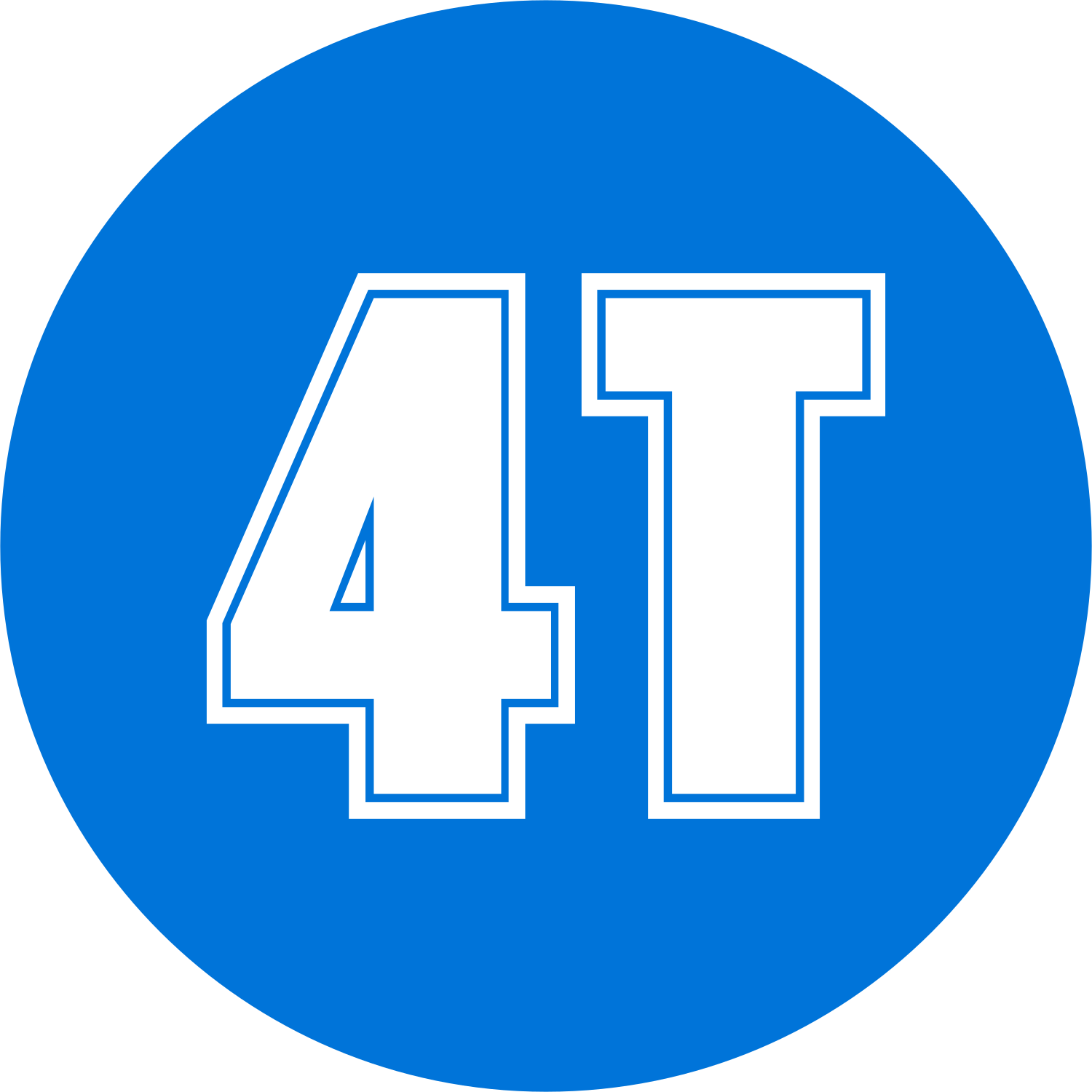What Quarters Are Worth Money?

Introduction
Coins can be really satisfying to even just hold and examine; they can be especially nice to collect. This is especially true the bigger and heftier a coin is, isn’t it? By this metric, in the United States, the most satisfying coin is the quarter. There are also dollar coins and fifty cent coins — these are larger and heavier than quarters, but they are much less common. The regular quarter provides more tactile and aesthetic pleasure to Americans on a daily basis than any other coin, and some quarters also provide collectors with another kind of satisfaction: monetary.
Since the 18th century, the 25-cent coin has not only offered a certain understated heft and gravity, but also developed its own legend and mystique. Starting in 1999, the long-standing design of the reverse (tails side) was suspended. Instead of the eagle, the coin’s back now features unique designs, rolled out in series. The first of these, running until 2008, was the State Quarter series. It featured fifty-six unique designs, each representing one of the states or territories with a beautifully wrought landscape. In 2024, in many US cities, the quarter is still the only way to pay a parking meter or a laundry machine.
In addition to their metaphysical, patriotic, and aesthetic value, quarters are sometimes worth quite a lot of money. Numismatists (coin collectors) know these coins to sometimes be a treasure hiding in plain sight. For example, recently a 1970 quarter from an extremely rare series that was accidentally printed over Canadian coins from 1941 sold on eBay for $35 000.
It’s a good idea to understand the worth of these coins beyond their face value even if you’ve never thought of collecting as an investment. You might be a layman with a valuable collection already in your pocket or on your nightstand. Find out–what are your quarters worth?
Whatever the reason you are interested in US quarters, after reading this article you will be much richer in knowledge about them.

History of the US quarter
The quarter, or quarter dollar, as it is officially known, first appeared in 1796. Minted in Philadelphia twenty years after the United States declared independence from Great Britain, and four years after the country’s first mint was established, the quarter has been in constant production since 1831. Its nominal value is 25 cents, or one-fourth (one quarter) of a dollar.
A lot of people used to refer to the quarter as “two bits.” This colorful phrase is now most often heard in movies about cowboys or gangsters — something like, “get out of here, you two-bit hustler!”The “bit” was what many called a piece of eight — now a word most commonly heard in films about pirates on the high seas. A piece of eight was one-eighth of a Spanish dollar — a currency in common international use at the time. A coin minted in Latin America, the Spanish dollar was designed to be divided into eight pieces called bits. Two bits were equivalent to two eighths, or one quarter, of a Spanish dollar.
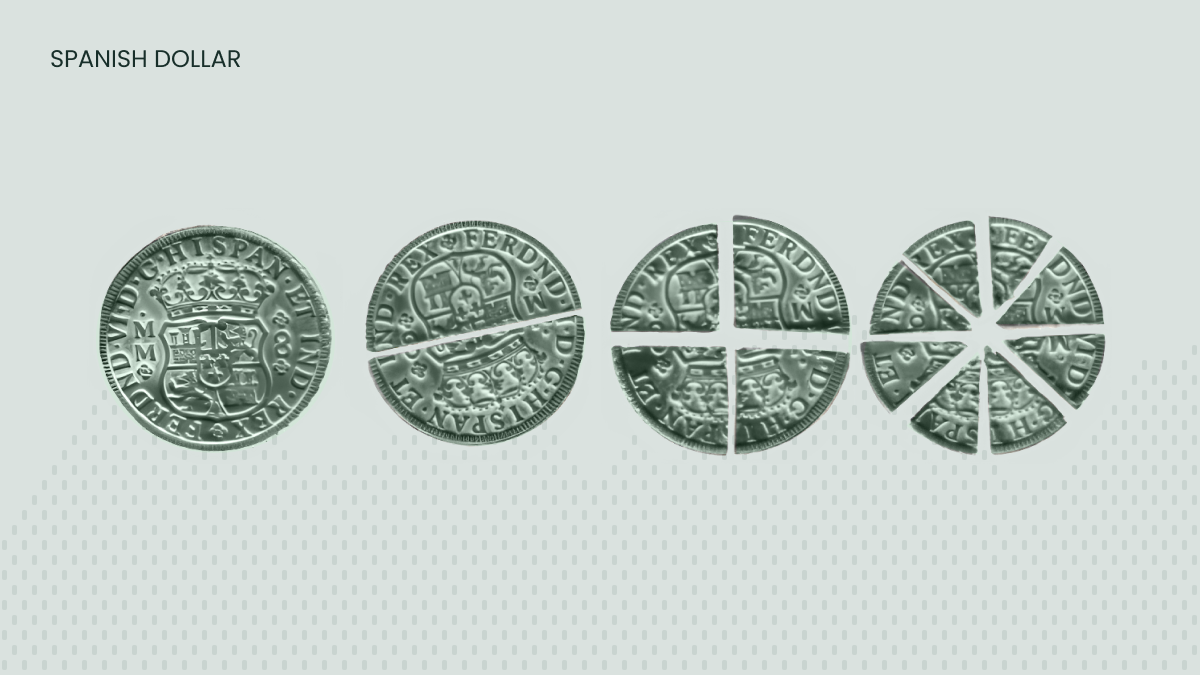
How the quarter lost its silver
The quarter is currently made from over 90% copper, and most of the rest is nickel. Until 1965, however, the quarter was 90% silver.
Since the Silver Purchase Act of 1946, the United States had consistently bought more silver than any other country. The same act also compelled the US Treasury to sell that silver at a fixed price. In the early 60s, the US government transitioned to selling the silver. This selloff and utilization was going to drain supply, thereby increasing the value of the metal, which meant the silver in coins would be worth more than the coins’ face value.
It became clear to silver investors that the US was going to stop producing silver coins. These projections led to a bullish market sentiment that lasted throughout the early 60s and swelled the price of silver. In 1965 the Mint removed the metal from all its newly minted coins.
The changing look of the quarter over time
Before settling on the current obverse image of the first president of the US, George Washington, 1932, the quarter depicted different variants of Lady Liberty. In that time, the legendary metal disk would be re-envisioned five times.
A neo-classical allegory that was very common in the late 18th century, the image of Liberty graced the iconography of both revolutions that were then rapidly and violently changing the world order - the American, and the French.The George Washington look was designed by sculptor John Flanagan. He based Washington’s likeness on a bust of him sculpted in 1786 (when Washington was alive, and not yet president) by French sculptor Jean-Antoine Houdon.

The Statue of Liberty, a legendary copper colossus that towers more than 100 meters above New York, was a gift given to the United States by France in 1876 in honor of the centennial of America’s Declaration of Independence.
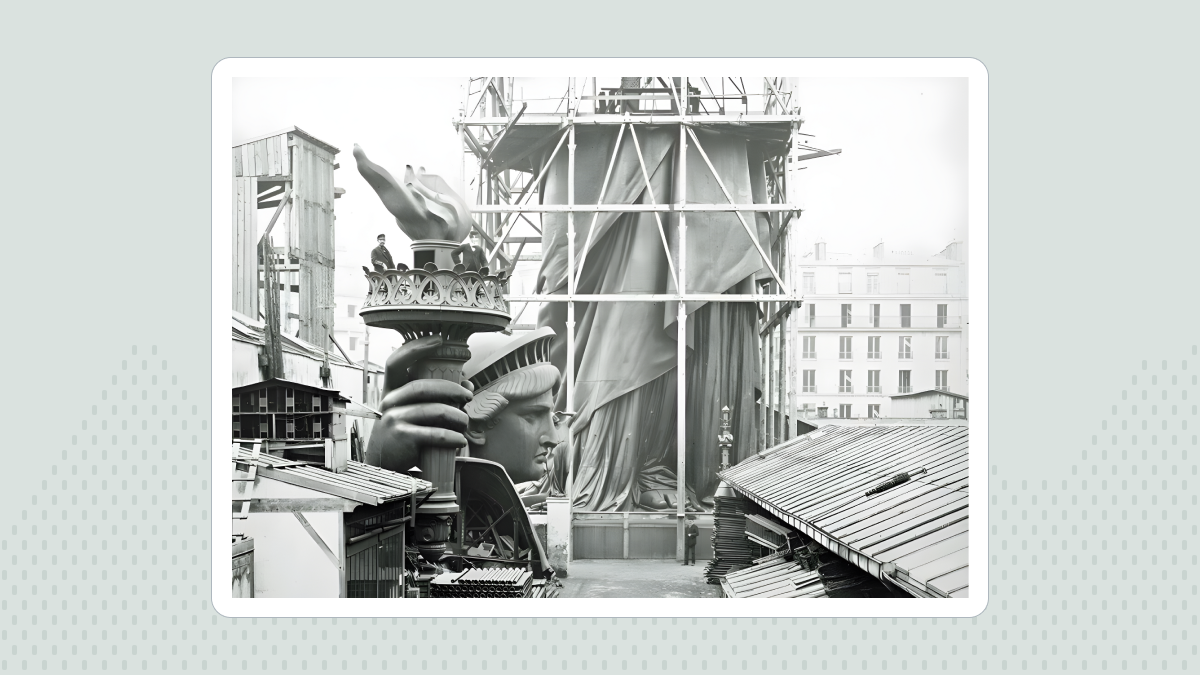
Other collectible quarters
The US Mint has produced numerous limited edition series of quarters with unique designs. From 1999 to 2009, the US Mint produced fifty new designs (five each year, each featuring a unique design on the reverse representing its state). These special coins were rolled out in the order in which the states joined the United States of America, beginning in 1789.
The obverse shows Washington. The inscriptions that are normally found on the reverse side of a quarter are also squeezed onto the front to make room for the new design on the back.
In 2009, the fifty state designs were followed by six more new looks honoring Washington D.C. and the US Territories. The National Park series of quarters followed from 2010 until 2021. Currently, the US is in the third year of its American Women series, set to run until 2025, releasing five new designs per year that feature historically significant American women.
Money is needed for trade. In the distant past, people did not buy things from far away. They subsisted mostly on what they produced themselves. What they could not grow, forage, or hunt, they got from their immediate neighbors in exchange for eggs or chickens, milk, larger cattle, or even labor. Clothing was sewn, shoes were cobbled (if they were in a person’s life at all), and furniture was built at home, or, in more developed locales, by the local tailor, cobbler, and carpenter. They were likewise paid in dairy or fowl. Lodgings were built by communal effort.
But, as life around the rim of the Mediterranean became more interesting, it became necessary to invent money that could be traded for goods shipped across distances. The Greeks, Phoenicians, and Persians gradually normalized the circulation of coinage between the 7th and 5th centuries BCE. By the 2nd century BCE, China was also using money, having been exposed to the practice through India and the silk and spices trading routes that spanned Eurasia. Some early Chinese coins were shaped like blades rather than disks. The Chinese also quickly expanded on the idea of coinage by inventing money printed on deerskin–a predecessor of paper money.
What determines the value of quarters
Basically, to find out whether your quarter is worth 25 cents or much more, find out how rare it is. Its condition and popularity with collectors also play an important role.
Collectors are always networking, staying in contact, and exchanging information with other collectors and dealers. Communicating with experienced experts can provide invaluable insights.
Likewise, it is crucial to consult current price guides and recent auction records, as well as be familiar with the markets in general.
| Trade now >> |
-
Rarity. Rare quarters tend to have a higher value on the numismatic market. What makes a coin rare can include specific editions, low production numbers in a given mintage, and historical errors in production. Coins pressed at certain mints, especially if they were produced in low numbers, can be more desirable, increasing their value. Watch out for mint marks, doubled dies, die clashes, and misaligned strikes — these factors make quarters worth more because they are unique.
-
Condition. As a general rule of thumb, the less wear and damage a coin shows, the more valuable it is. A coin’s condition is called its grade, and is determined by six factors: strike, preservation, luster, color, attractiveness, and place of minting.
-
Demand. Coins that are more popular among collectors are worth more. Market trends tend to be based on rarity: historical significance, unique design elements, and specific themes.
Coins can be most reliably graded by a professional third-party numismatic company that works in accordance with the official 1977 standards published by the American Numismatic Association (ANA). The table below shows the basic coin grades and what they mean:
|
GRADE |
DESCRIPTION |
|
PROOF – (PF/PR)
|
A coin not minted for circulation, with sharp detail and usually with a mirror-like surface. Proof is not a condition, but the method of manufacture: special planchets and polished dies are used to strike proof coins. Intended mainly for collectors, proof coins are not circulated. |
|
MINT STATE(MS, UNC) |
Coins without any wear. As described below, blemishes, toning differences, and slight imperfections can cause such coins to vary a little bit. |
|
PERFECT UNCIRCULATED (MS-70) |
No wear at all. No scratches, evidence of handling, or contact with other coins. Regular-issue non-proof) coins in this condition are almost never found. |
|
GEM UNCIRCULATED (MS-65 to MS69) |
An Uncirculated coin with high eye appeal. Light toning and a small amount of evidence of contact on the surface or rim are acceptable.
|
|
CHOICE UNCIRCULATED (MS-63 to MS64) |
An above average Uncirculated coin. It may be shiny, or very slightly toned. A small handful of contact marks on the coin’s surface or rim is acceptable. |
|
UNCIRCULATED (MS-60 to MS62) |
No trace of wear. Contact marks are possible. Some shine may be lost. |
|
CHOICE ABOUT UNCIRCULATED (AU-55 TO AU58) |
Only the highest points of the design may show the lightest of wear. Still pretty shiny. |
|
ABOUT UNCIRCULATED (AU-50 TO AU53) |
Light wear on many high points. At least half shiny. |
|
CHOICE EXTREMELY FINE (XF-45 or EF-45) |
Light overall wear shows on highest points. All design details are still clear. Minor mint luster is evident.
|
|
EXTREMELY FINE (XF-40 or EF-40) |
Light wear on the design, but all the coin’s features must be clear and well-defined. Traces of luster may show. |
|
CHOICE VERY FINE (VF-30 to VF-35) |
The surface and highest parts of the coin’s design may be lightly and evenly worn. All features and text are not sharp, but visible. |
|
VERY FINE (VF-20 top VF-25) |
High points of the coin’s design are moderately worn. All major details are visible, sharpness is compromised. |
|
FINE (F-12 to F-15) |
Moderate to considerable even wear. The design is quite worn, but still visible in whole. |
|
VERY GOOD (VG-8 to VG-10) |
Well worn with main features clear.
|
The most valuable quarters
Quarters have been in production for 228 years. Here is a breakdown of the most valuable ones, in chronological order by mintage. What are your quarters worth?
Draped Bust Small Eagle, 1796

Liberty facing right with a ribbon in her free-flowing hair, and her chest draped in cloth. The word LIBERTY is written over her head, the year is indicated under the bust, and the obverse side includes 15 stars (one for every state at the time). These were the first quarters minted.
There are fifty stars on the US flag today. They represent the fifty states. The thirteen stripes on the flag stand for the first group of colonies that declared their independence from Great Britain twenty years before the first quarter was minted.
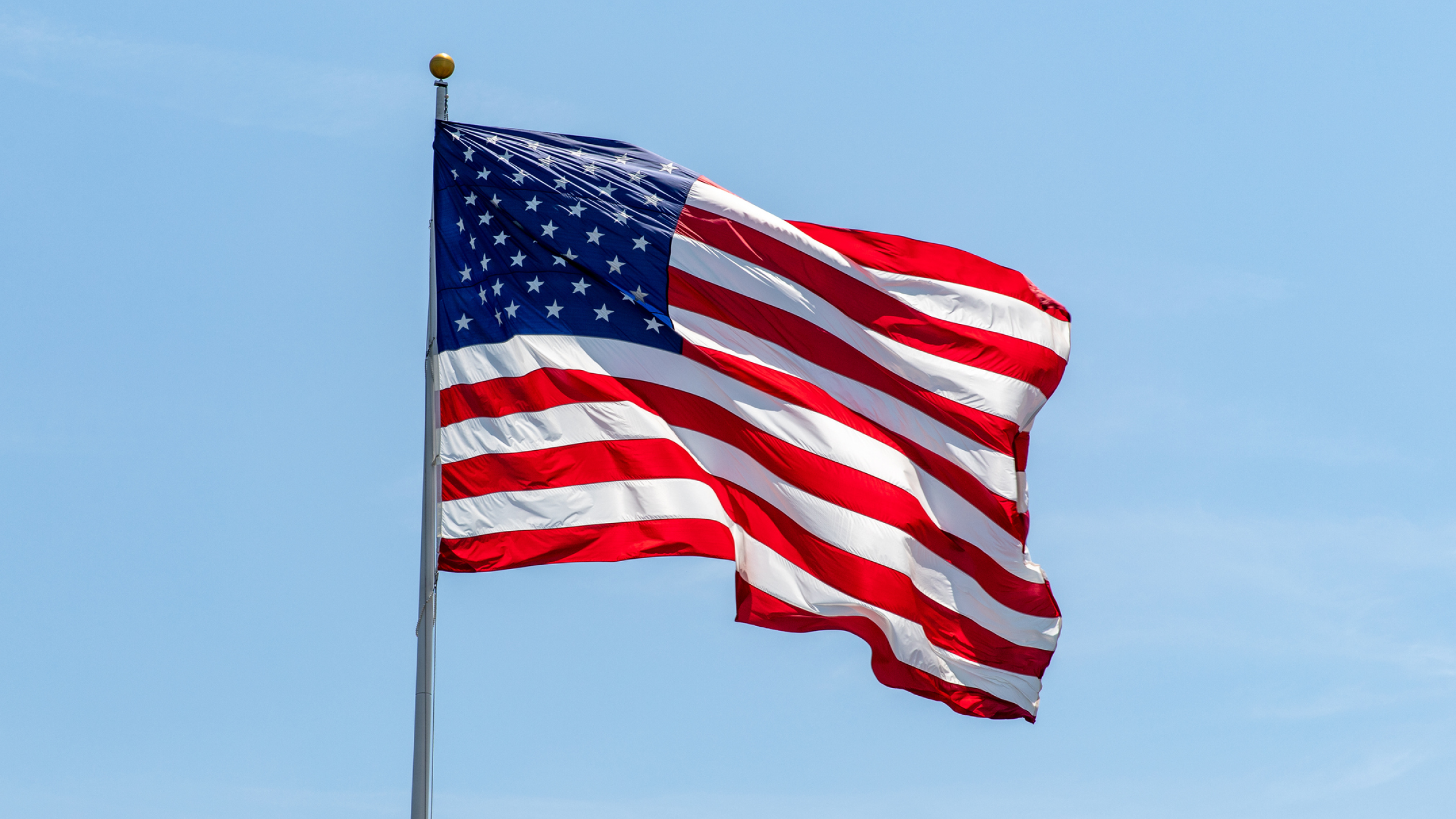
The reverse side of the first quarter is adorned with an eagle that is small, and framed by a laurel wreath (symbolizing achievement and victory) and the words UNITED STATES OF AMERICA. The denomination of the coin is not indicated on either side.
Among American coins, this is one of the rarest. There are only about six hundred authentic 1796 Draped Bust Small Eagle quarters in existence today. This represents less than 10% of the entire first mintage.
Depending on its condition, a coin from this mintage can have a worth starting at about $1000. Coins in Fine (F) or Very Fine (VF) condition can bring in several thousand dollars, Extremely Fine (EF) or About Uncirculated (AU) may reach tens of thousands, and Mint State (MS) coins can garner 6- or even 7-figure prices. In 2022, a 1796 Draped Bust Small Eagle quarter with a grade of MS-66 was sold for over $1 740 000.
The 1804 Draped Bust Heraldic Eagle quarter

This is a highly valuable and historically significant coin. From the front, it looks the same as the 1796 quarter. The back features a larger eagle with wings spread, holding a quiver of arrows in its right talon, and an olive branch in its left. It is fronted by a ribbon bearing the text E PLURIBUS UNUM, and a shield bearing thirteen stripes — one for each of the original British colonies that unified to declare independence. A sky with stars and a chain of clouds is over the eagle’s head, and the coin’s denomination 25 C. is printed under it.
The arrows and olive branch the eagle is clutching symbolize strength and peace, respectively. The eagle itself symbolizes government order and national identity.
What’s one of these quarters worth? An 1804 Draped Bust quarter in Average Condition (AC) is worth about $1600. In MS condition, however, you could unload yours for a cool $157 700.
The 1838 Seated Liberty quarter
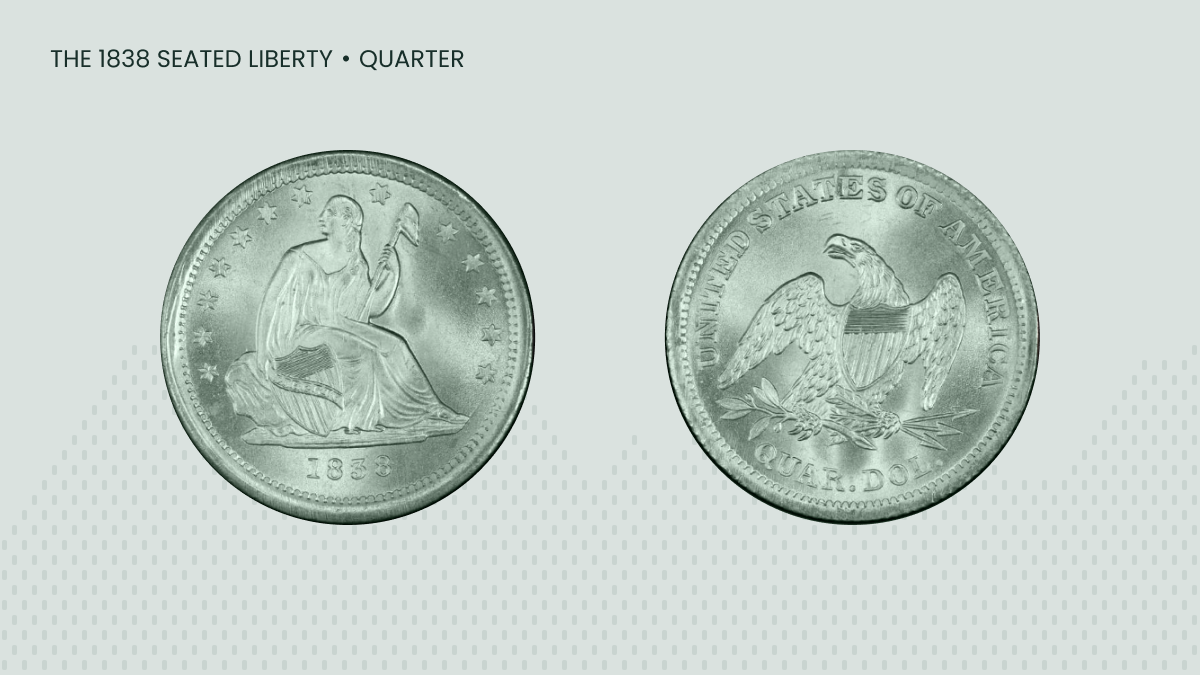
The mid-1830s saw a revolution in minting technology. Until that time, coins had been minted using man- or horsepower, with each press only able to produce a dozen coins per minute. In 1831, however, a special expedition by artist and archivist Franklin Peale to observe European mints provided a lot of information that helped fuel an overhaul of the minting system in the United States. The pre-electricity cutting-edge technology of steam power was then adopted for minting coins.
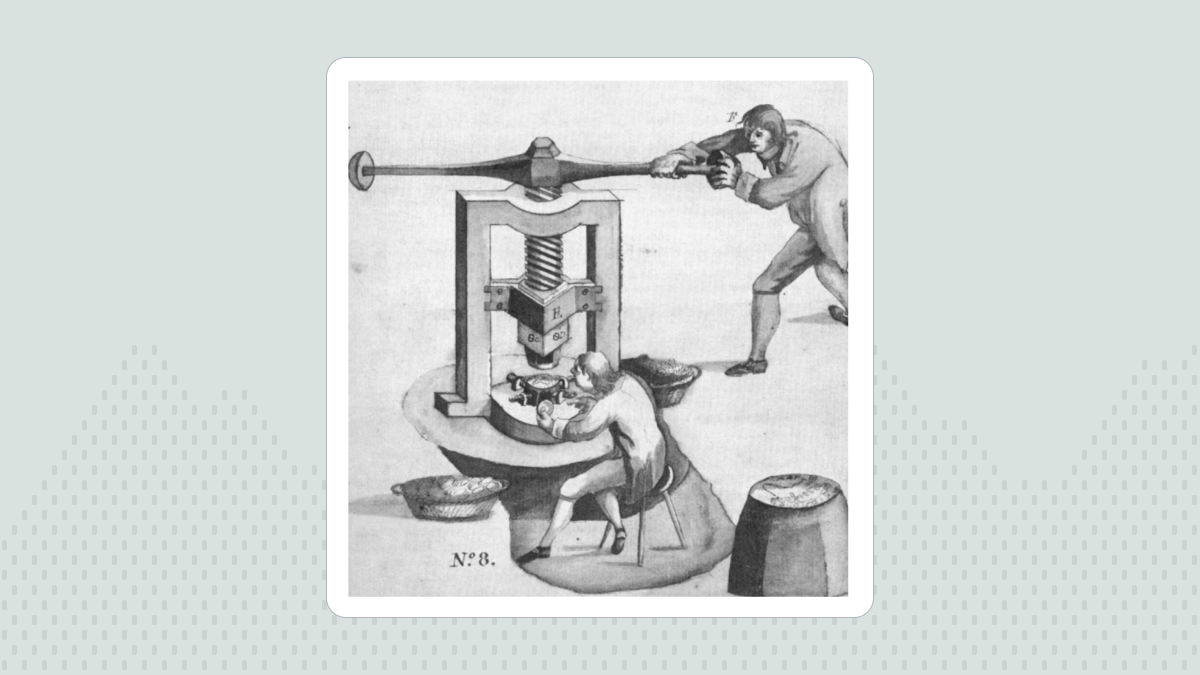
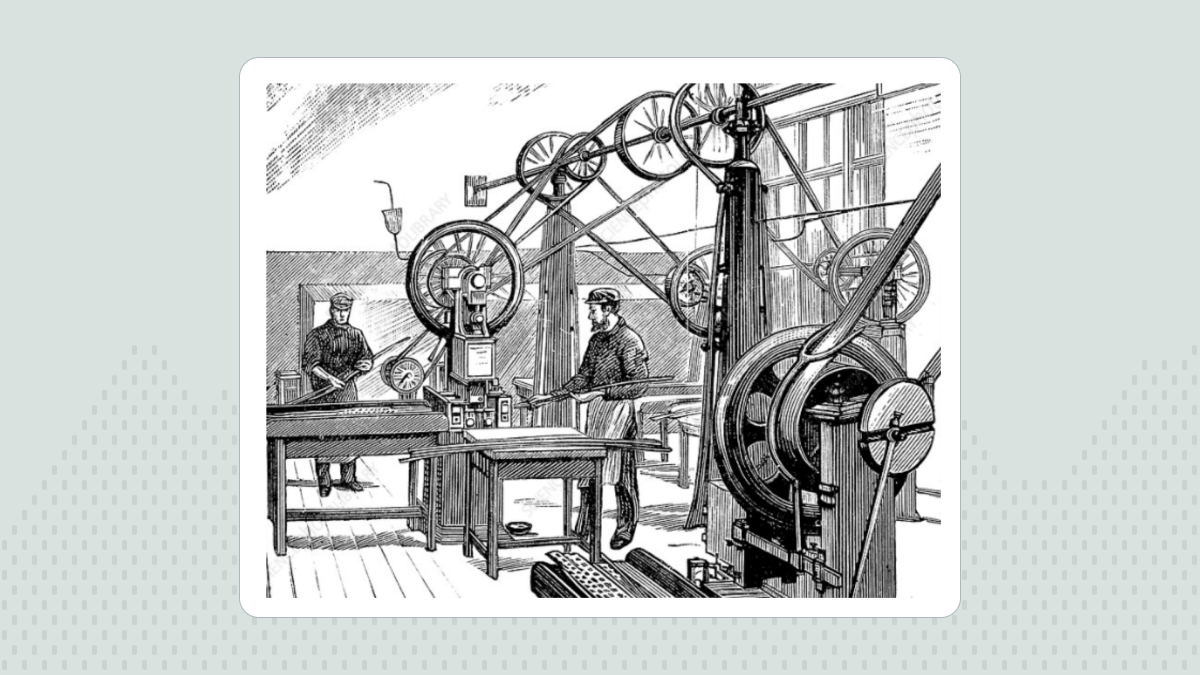
Among the first coins minted with the new steam-powered presses was the Seated Liberty quarter, which featured a refurbished design on both sides.
On the obverse side, Lady Liberty is represented in full body, seated on a rock with her body facing right, but her head turned to the left. She holds a staff (representing authority) with the cap of a revolutionary soldier on top, in her left hand. At her right side is a crest with stars and stripes. She is framed by thirteen stars, and the year is printed at the bottom.
An eagle with arrows (war) in its left talon, and olive branches (peace) in its right, fronted by a shield with stripes, and its wings spread, graces the reverse, framed by the usual inscriptions.
In poor or average condition, these coins may cost as little as $100 or less, but in mint condition they can be worth thousands of dollars. A coin from this mintage has reached an impressive $285 000 at auction.
The 1901-S Barber quarter

Designed by Charles Barber in 1891, the Barber series of quarters reflected a new style. The English Romantic look of the coins was out of fashion, and a more brutalistic, future-oriented coin was desired. In print, this coin was described at the time as “the ugliest money of all civilized nations,” and the staff and cap in Liberty’s left hand as “a broomstick with a woolen nightcap on it” (The Galaxy, 1876).
The obverse of Barber’s new design features a large chiseled profile of Liberty facing right, wearing a revolutionary’s cap and a laurel wreath on her head, framed by thirteen stars. IN GOD WE TRUST is written across the top, and the date is at the bottom. The reverse is another variant of the eagle with arrows, olive branch, crest, ribbon reading E PLURIBUS UNUM held in its beak, and stars overhead.
The 1901-S Barber is a quarter of particular rarity, from the presses of the San Francisco Mint. Only 72 664 of these coins were ever minted. Because of their rarity, 1901-S Barber quarters can be worth thousands of dollars even in poor condition. In average condition, they can garner $20 000 — 50 000. An NGC MS-68 1901-S Barber discovered in 1990 sold for $550 000. Maybe you’ve got a Barber quarter worth a cool half a million lying around?
The (naughty) 1916 Standing Liberty quarter

The first quarter without stars on the obverse, this coin features Liberty standing between two Grecian-looking altars that bear the words IN GOD WE TRUST. Her body draped with a toga her right breast is exposed to symbolize the maternal role of the banking system in the maturation of the country. In her left hand, Liberty holds a shield.
On the reverse, the design shows an eagle in flight, stars, the words UNITED STATES OF AMERICA at the top, E PLURIBUS UNUM under that, and QUARTER DOLLAR at the bottom.
This mintage was the only one to feature Liberty’s exposed breast: due to public outcry, starting the following year her shame was covered by chain mail. There were only 52 000 Standing Liberty quarters minted in 1916. In AC, this rare coin is worth $2 800, increasing to $18 000 or more in better condition.
The 1932-D and 1932-S Washington quarters
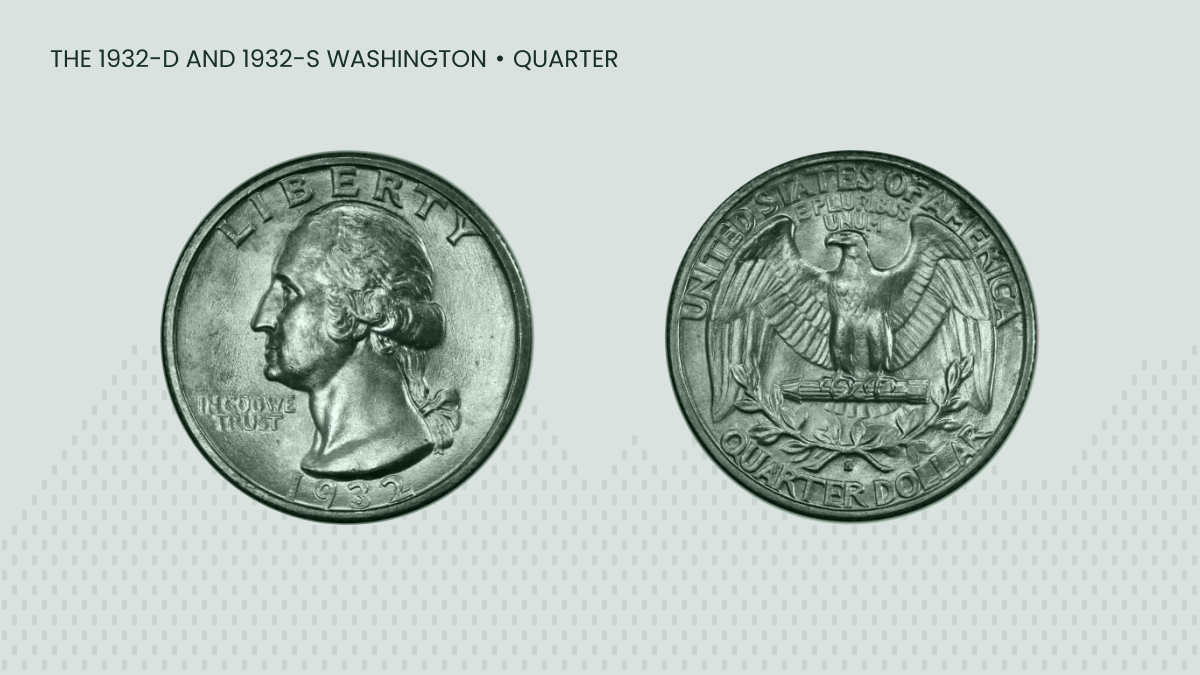
In 1932, when George Washinton would have turned 200, the United States replaced the image of Liberty on the quarter with the first president’s profile.
Since 1866, the United States has had a law that forbids the depiction of a living person on US money.
These are the most common and recognizable quarters. Their design both front and back did not change from 1932 to 1998. The obverse features the legendary profile of George Washington facing left in his powdered wig with a ponytail. The reverse shows the traditional spread-winged eagle, gripping arrows in both feet, framed underneath by a laurel wreath. Mint marks like S or D can be found underneath the eagle. These indicate San Francisco and Denver, respectively. The former mint produced 408 000 coins in 1932, and the latter — 436 800.
Worth $200 in poor condition; in mint condition, they can reach thousands. In 2008 a 1932-D with a grade of MS-66 sold for $143 750, and in 2020 a 1932-S sold for $45 500.
Where to sell your quarters
Thinking about cashing in on that coin collection? Here’s how.
Coin dealers
Coin dealers will buy in bulk at 20-40% below the actual worth. If you need cash fast, this may be what you’re looking for. However, it is very important to know your quarters’ worth beforehand to ensure you don’t get ripped off.
Auctions
Coin auctions are a platform where you can reach a wide audience of collectors and enthusiasts. They are an excellent option for the seller who can take their time selling their coins one by one. Interested parties can bid on your quarters. A truly valuable coin will have buyers fighting over it, which can drive up the price, so this can be a pretty profitable option. The auction charges a flat fee or a percentage of each transaction.
Numismatic exhibitions
At coin fairs, you can demonstrate your quarters to a targeted audience and network with other numismatists. If you attend as a seller, you can have your own display and sell your coins directly to collectors. This face-to-face interaction can also help you gauge how much quarters are worth based on immediate buyer interest and feedback.
Online platforms
A reputable online platform for buying and selling coins may be what you’re looking for. It’s extremely important to do due diligence in researching the platforms. Don’t just pick a platform because it’s popular — most importantly, find one that will keep your transaction safe and secure.
| Trade now >> |
Online forums and communities
You can join online coin forums and communities to connect with collectors who may be interested in your quarters. These digital meeting places are great places to network, share information, find buyers, and give you insights into current market trends and the potential worth of your collection.
Summary
You don’t have to be serious about collecting coins, or even investing, to get more from your quarters than their face value. In addition to their amusing history and pleasing heft, they can sometimes have serious monetary value. Who knows, maybe there’s a fortune in your pocket right now. The next time you’re about to put one in a washing machine, examine the contents of your pockets carefully. You don’t want to end up inadvertently laundering away real money.
The value of rare and collectible quarters varies hugely. It depends on such factors as rarity, condition, mint marks, and popularity. The value of coins fluctuates like any commodity, so if you want to optimize the value of your collection, it’s crucial that you monitor the markets with an eye to these specific price-affecting aspects. It is likewise of essential importance to use the right place to sell your coins. You must weigh your expectations and requirements, combine that information with exhaustive research, and choose the right way for you.
| Register now |
FAQ
What determines the value of quarters?
Like any coin, the value of quarters is determined by their rarity, condition, and desirability on the numismatic market. The value of coins fluctuates like that of any commodity, so if you’re looking to maximize the profit from cashing in your coins, you should follow the market and consult with experts.
What are the most valuable quarters?
The most valuable quarters are 1796 Draped Bust Small Eagle quarters in mint condition. Only 600 of them exist. Even in poor condition, these coins are worth at least $1000. In 2022, a mint condition 1796 Draped Bust Small Eagle quarter sold for $1 740 000.
What metal are quarters made from?
Since 1965, quarters are made from a combination of copper and nickel, specifically a copper core with a nickel outer layer, giving the coins their distinctive look and durability. From 1796 to 1964, silver was mainly used.
How much are silver quarters worth?
From 1796 until 1837, quarters were 84.24% silver, and from 1838 to 1964 they were 90% silver. Even humdrum coins from this period are worth however much the silver in them is worth. Even in poor condition, a quarter from before 1964 is worth at least $3 — twelve times its face value. Even a single coin can make a collection much more valuable.
How do I sell my quarters?
You can sell your coins wholesale at a 20-40% loss to a coin dealer, auction them off one by one, sell them to a targeted audience at trade fairs and numismatic exhibitions, put them up for sale on an online platform, or through an online forum or community. Make an effort to find the best way to sell your quarters and make your choice carefully, based on your specific requirements and expectations. Don’t rely on brand recognition.
Why are quarters sometimes called “two bits”?
In the 18th century, money generally tended to be subdivided into denominations like 20 cents, 10 cents, and 5 cents. A twenty-five cent coin was not a common phenomenon. However, a common currency in the Americas was the Spanish dollar. This was a coin designed to be broken into eight pieces that the English-speaking world called “bits.” One bit quarter was worth one-eighth, and two bits quarter was worth one quarter of a Spanish dollar. At the time, the two currencies were transferable, so the idea for a quarter dollar coin stuck.
09/21/2024
